Five great things to do in Veneto
From our romantic apartment in Asolo, we not only enjoyed the culture and lifestyle of the captivating town just beyond our doorstop, we had easy access to other wonders of the Veneto region of Italy on side trips during our four-day stay.
With our expert guides and gracious hosts Mr. TWS and I explored highlights that included regional wine, art, and architecture. Here are five places that we recommend for your Veneto itinerary.
Villa di Maser
Along Veneto’s Strada dell’Architettura (Architectural Road) are numerous examples of the exquisite architecture of Andrea Palladio (born in Padua in 1508). The style is characterized by the symmetry and proportions of classical Greek and Roman architecture, especially temples. Another common characteristic is the portico with arches and columns that provide the unique appearance of the front of the building. The distinct Palladian architectural style spread to England, other European countries, and also to North America. For example, the design of the White House in Washington D.C. was influenced by the Palladian style.
We visited Villa di Maser (officially known as Villa Barbaro del Palladio) in Maser, just about 7 km from Asolo. The villa (with the 230 hectares of agricultural land upon which it sits) has been owned by several different important families over the years. We were warmly greeted by the villa’s current owner, Count Vittorio dalle Ore whose wife is of the Diamante family who bought the property in 1934 and restored it after WWII.
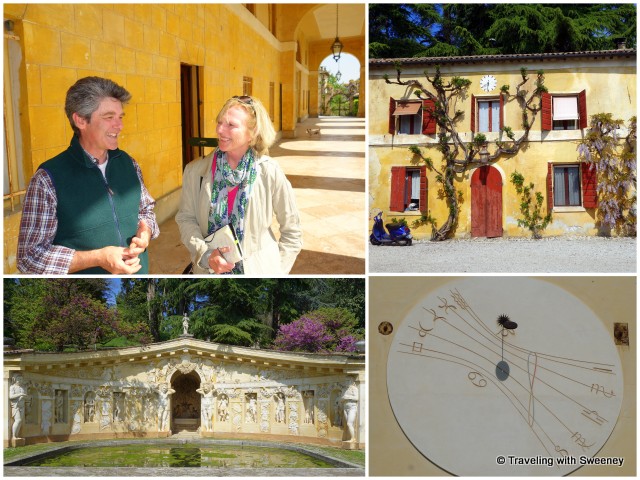
With Vittorio Dalle Ore, the estate winery, one of two sundials on the facade, and the Nymphaeum of the villa’s garden
Open to the public since the 1930s, Villa Maser was included as part of the UNESCO World Heritage Site designation of “City of Vicenza and the Palladian Villas of the Veneto” in 1996. In the six rooms that can be toured, visitors can admire the beautiful frescoes of Paolo Veronese (which took ten years to paint) and sculptures by Alessandro Vittoria, considered important works of the Venetian Renaissance. The family lives in the villa and there are a a few spots where you can get a glimpse of the living quarters. Also seen from inside is the Nymphaeum (a classical Greek/Roman arched wall which was a monument to the nymphs), a beautiful garden, and a fishing pool. The estate has also been making wine since 1560 on 33 hectares of vineyards, important to the economy of the villa since its early days.
Possagno – The Land of Canova
Veneto is very rich in art of many types, particularly in an area that our guide referred to as the “Golden Triangle” of artists and painters roughly defined by the vertices of Castel Franco to Possagno to our base in Asolo.
In Possagno, the birthplace of neo-classical sculptor Antonio Canova (1757 – 1822), we had some surprises relating to the great sculptor. First was the sight of the imposing 19th-century hillside temple that Canova designed and where he is buried. The Temple of Canova, designed and financed by Canova, looks like an ancient Roman/Greek temple nestled on an isolated hilltop against a mountain backdrop. As dramatic as the building and setting, a stunning patterned mosaic lies before it leading up to the impressive steps before the portico. The temple looks very much like the Pantheon in Rome. But Canova’s surprises weren’t through for us this day.
Our next surprise was Museo Canova, Passagno’s museum dedicated to the famous sculptor. Its unassuming exterior left us unprepared for what was inside. Within were many of the actual works of Canova that were steps in the creation of his sculpture before committing to marble; they provided a comprehensive representation of his art. The first room you enter contains paintings, drawings and sculptures of Canova which leads outside to a separate building, the Gipsoteca. The building, composed of two large halls, was filled with the plaster cast models of many of Canova’s sculptures, works that are in famous art museums of the world, such as Psyche Revived by Cupid’s Kiss in the Louvre and Perseus Triumphant in the Vatican. The casts are made from the initial clay sculptures as the step before committing to marble.
During World War I, a bomb damaged many of the statues in the Gipsoteca, but they were carefully restored by Possagno artists, Stefano and Siro Serafin. The museum also includes a library, and a courtyard garden. To one side of the garden is the home where Canova was born. On exiting the museum, there was one more surprise we hadn’t noticed on the way into the museum. As you exit, you view across a stone paved area, up an impressive stairway that directly funnels your vantage up the hill to showcase a view of the temple.
Bassano del Grappa
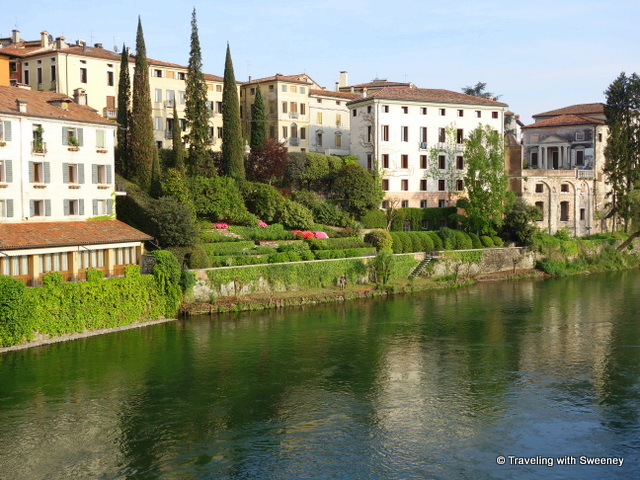
Pretty scene along the River Brenta in Bassano del Grappa
Bassano del Grappa is a lively, international city that attracts tourists from all over the world, and also has attracted many current residents who have come here to live from other places. In fact, as we strolled around town, Mr. TWS and I contemplated how great it would be to live there ourselves. Bassano del Grappa dates back to Roman times and is famously known as the ceramics capital of Northern Italy, as the birthplace of grappa (the liquor distilled of the grape remains from the winemaking process, i.e. the skins, pulp, seeds, and stems), and for architectural gems in its beautiful location along the Brenta River. We were able to spend the afternoon here walking the town and exploring some of its locations and sites.
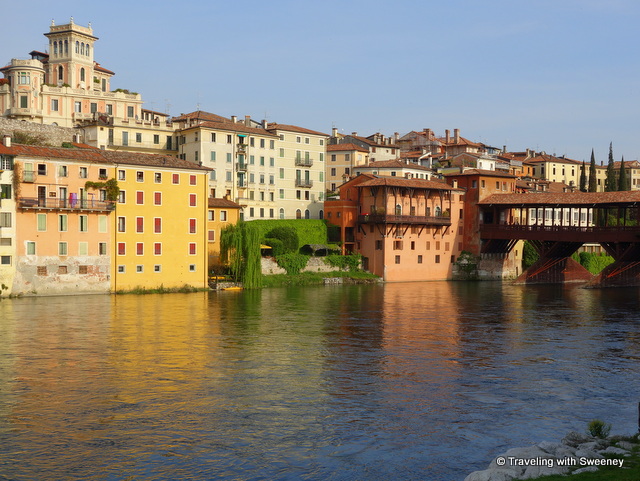
Buildings of Bassano del Grappa (liberty style seen at the top) and Ponte Vecchio over the River Brenta
Ponte Vecchio, the wooden covered bridge that spans the river, is the city’s symbol and a famous symbol of Italy. It was designed in 1569 (though earlier versions go back to the early 13th century) by Palladio, and destroyed and rebuilt many times, including the last time during World War II. After the war, it was reconstructed by the Alpini, the elite mountain force of the Italian army, and from that day the bridge has also been called Ponte degli Alpini (Bridge of the Alpine Soldiers). World War I also was key to the city’s history and nearby Mount Grappa was the site of many fierce battles. To honor those who died in the battle, the city name Bassano Veneto was changed to Bassano del Grappa.
During WWI, Ernest Hemingway stayed many days in Bassano del Grappa recuperating from injuries received when the ambulance he was driving was struck by a mortar. The experience became part of the basis for A Farewell to Arms which is commemorated in the city’s Heminway and Great War Museum that particularly portrays aspects of American involvement in WWI from an Italian perspective.
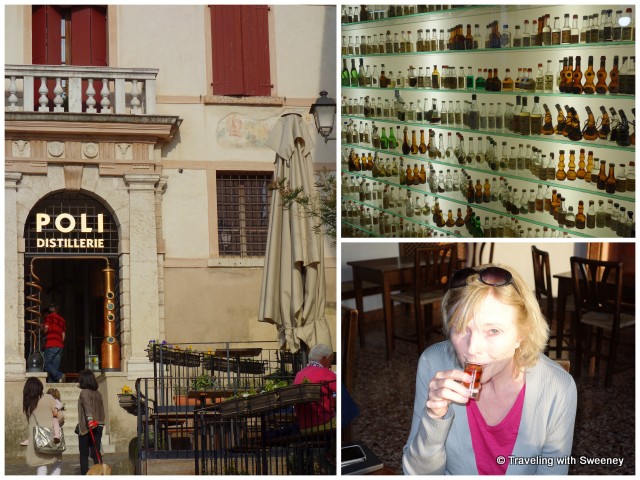
Museo Poli Grappa Museum entrance and collection; having a taste of grappa at the Nardini Distillery
Of course, we couldn’t pass up a taste of grappa while here. We started at the Poli Grappa Museum, which has interesting exhibits including the copper cauldrons used in distillation of grape pomace and a collection of grappas from Italian distilleries. I didn’t before realize that there was such a variety of styles of grappa with different tastes depending on several factors, including the vines, the vintage, the aging, distillation process, and herbal and aromatic infusions. The Poli family has been making grappa since 1898. Poli also has a larger museum in Schiavon, 12 km from Bssano del Grappa.
At the Ponte Vecchio is the store and tasting room of the Nardini Distillery, where Bortolo Nardini invented and first produced grappa in 1779. The old and historic tasting room has a large bar with artifacts from early distilling days and displays of the many products today. We sat by a window in an adjoining room which gave us a great view of the river below.
Tempted by a menu of delicious-looking grappa cocktails, I still chose a basic sample (one that was quite smooth, contrary to how many think of grappa’s characteristics. I would definitely like to come back to Bassano del Grappa to walk around some more and also see other attractions, such as the Duomo, the castle, the ceramics museum, and the Hemingway and Great War Museum.
Treviso – City of Art and Water
One of the largest cities in Veneto, Treviso was another side trip that we would recommend as a must if staying in Asolo or visiting Veneto. We spent about a half day walking around (but clearly there’s more to do in Treviso to warrant at least several days) and we loved the city. There are a lot references we saw to Treviso as a little Venice and we could easily see why. In particular, the water and canals remind one of Venice as well as narrow winding streets and colorful period buildings and houses.
Entering the city by way of one of its three gateways through the well-preserved 15th-century walls, we admired many of Treviso’s liberty-style buildings (such as the one in Bassano del Grappa that grabbed my attention). We mostly walked the city center which on this Saturday in May was bustling. From our parking spot we passed the Benetton Treviso rugby stadium – needless to say we were surprised to find rugby as opposed to football in Italy. The professional rugby team is owned by the Benetton clothing company, headquartered here. Trevios has a Roman design with its right angle roads and it bears similarities to Venice particularly with its winding streets, and numerous canals and bridges.
Saturday was market day in Treviso, which added to the bustle. We enjoyed seeing the fish market (open every day Tuesday through Saturday) located in the middle of a small island in the Canale Cagnan. Surrounded by the canal, it was one of Mr. TWS favorite spots in Treviso.
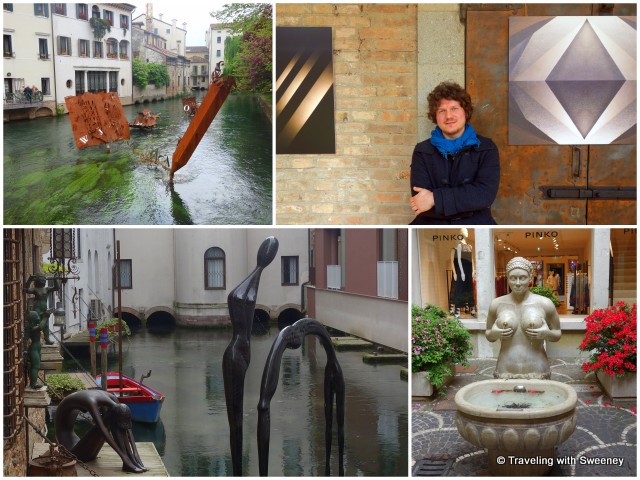
Art of Treviso — sculptures on the river (left), photographer Alessandro Trevisin (top right), Fontana delle Tette (bottom right)
Wonderful elements of art and water are seen throughout Treviso, e.g., as in the sculptures on the canals in the pictures above. The Fontana delle Tette (in English, he Fountain of Tits) is a reproduction of the famous statue and symbol of the city originally build in 1559 providing water during a severe drought. Back then at various times of celebration, the fountain poured red wine from one nipple and white wine from the other; it certainly captures your attention. At the church of San Francesco, we met a photographer, Alessandro Trevisin, who was exhibiting a collection of his photographs representing colorful geometric patterns present in close-ups of everyday objects.
For lunch, we sat outside at Cantinetta Venegazzù on Piazza Giannino Ancillotto for a tasty sampling of local cheese, ham, and bread accompanied with Prosecco. Just a few yards away is Le Beccherie, the restaurant that claims creation of tiramisu (though another restaurant in Treviso and others in Italy claim that they were first).
The Prosecco Road and Villa Sandi
Reminiscent of wine routes such as in the Napa Valley is Veneto’s Strada del Prosecco (Prosecco Road) that runs from Valdobiadene to Coneglano through the hillside vineyards that make up the regions DOC. It’s in the hills of Cartizze where the best grapes for Prosecco are produced. This area along the River Piave has historic significance, too. This is where during WWI and WWII, the Italian people fought significant battles that ended these wars.
Villa Sandi in Crocetta del Montello is the biggest wine estate of the area located between the COCG area of Prosecco of Valdobbiadene and DOC area of the Montello and Colli Asolani. The villa is a Palladian-style beauty that was built in 1622 and has been in owner Giancarlo Moretti Polegato’s family for many generations.
A big treat is a tour of the 18th century underground cellars that stretch out for over 1.5 km under the villa. The tunnels were used as military headquarters in WWI. The humidity and constant temperature of the galleries provide the perfect environment for the wine. Bottles of Villa Sandi’s classic method sparkling wine “Opere Trevigiane” are stored here. The tour ends with a generous tasting of Prosecco Superiore, one of the winery’s premier vintages that we also enjoyed later with a bottle that we took back to our apartment.
The villa itself is beautiful and I was really impressed with the gorgeous Murano chandeliers in several of the rooms open to the public.
Other Veneto Highlights
Asolo is a great place to visit and it is well situated as a central point for visiting many sites and attractions in Veneto. The ones we mention here were the side trips we did in just a 4-day Asolo stay. We could imagine a much longer stay affording time to spend more time just in Asolo, more time on the side trips mentioned here, and going further afield in the region.
We talked to our hosts about what other places to see in Veneto on a return visit. Here are a few of them:
- Vicenza — Sites to see include the basilica, the theater, and Villa Almerico Capra (also known as La Rotonda), another masterpiece of Andrea Palladio.
- Padua — The setting for much of Shakespeare’s Taming of the Shrew, some of Padua’s key sites are the historical center, a famous caffè frequented by Padua artists, the market which is open every day, the largest square in Europe, and the Basilica San Antonio.
- Verona — Verona is well-known as a setting in Shakespeare’s Romeo and Juliet (the fictitious Juliet’s balcony) and was named a UNESCO World Heritage Site for its many historical buildings, some dating to Roman times. The arena in Verona hosts many special events such as summer operas.
- Marostica — Besides its imposing castle and ancient city walls, Marostica is known for its traditional human chess festival held every two years in September. I would love to see that!
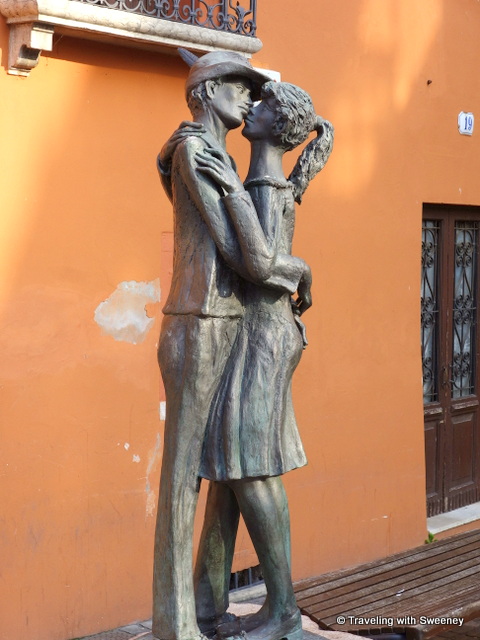
Statue of Alpini soldier kissing his sweetheart goodbye in Bassano del Grappa
Goodbye to the Veneto and on to Venice!
Directly from Asolo, we headed to the fairytale-like capital of Veneto — Venice. We went by car to Portegrandi where we embarked on the Silis, a tour boat operated by Navigazione Stefanato, a family-owned and operated Italian river cruise company, to arrive in Venice by boat. The four-hour cruise included delicious fresh seafood snacks and generous pours of Prosecco. Mr. TWS loved the delicious fried smelt served by the plateful by the fun and courteous crew. The cruise also included a stop in Murano for a glass-blowing demonstration and a quick walk around. We got to see many other islands in the Venetian lagoon and the beautiful views of the city as we arrived. In the photo above, you can see the very cool surreal look of the city that was created by the light rain that was falling. It was a great way to travel and arrive in Venice. Check out Navigazione Stefanato for more about their tours and services.
Map showing our Veneto highlights locations
Thanks to Elena Benassi, Discovering Veneto, and EsteVillas for hosting our Veneto exploration.

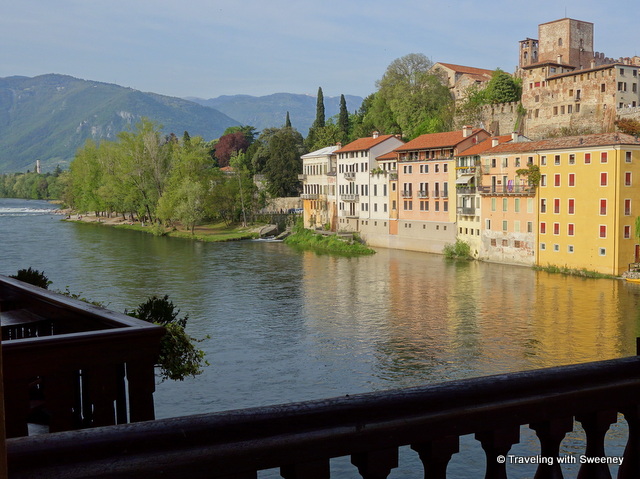

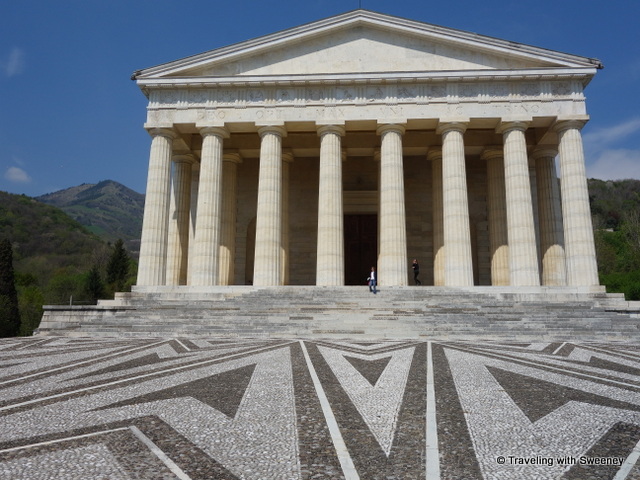
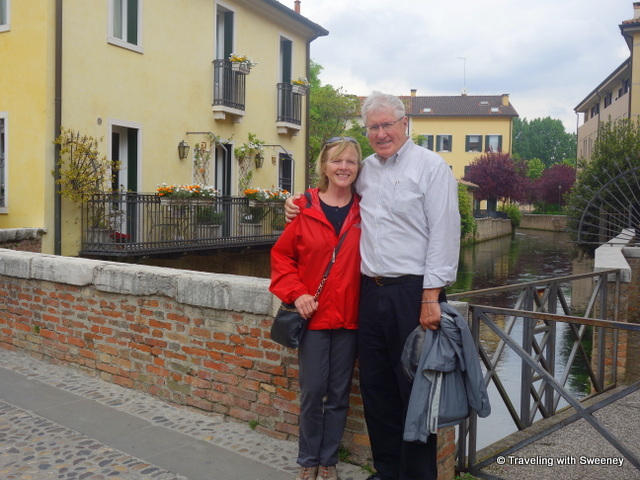
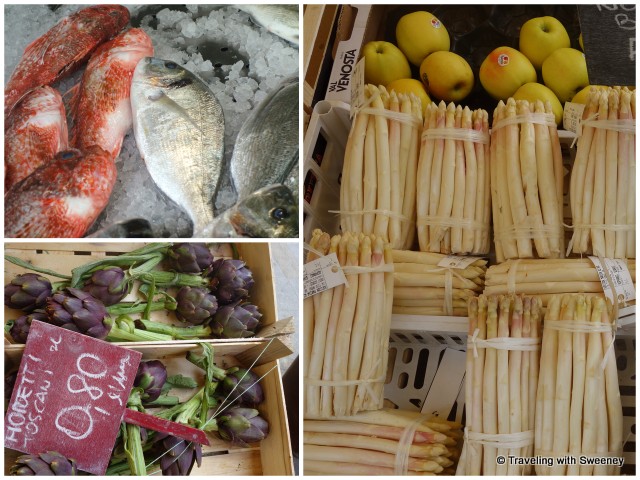
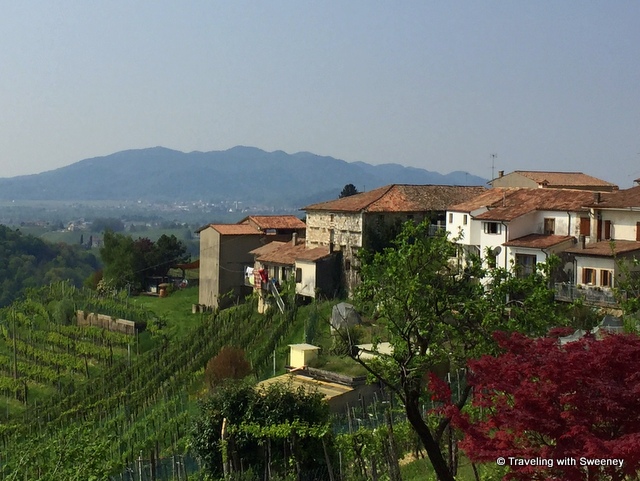
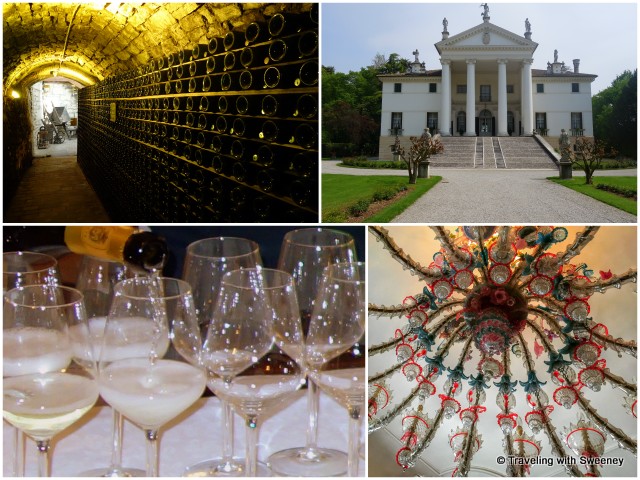
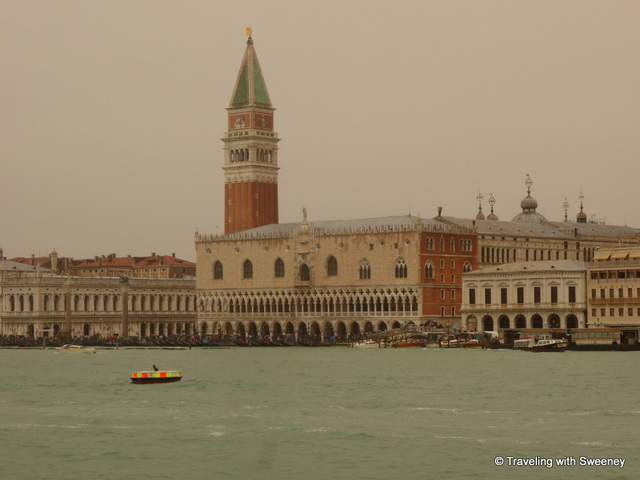
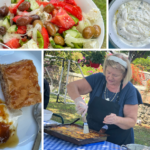

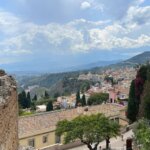
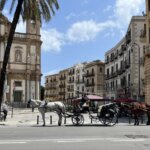
Pingback: I Left My Heart in Asolo, City of a Hundred Horizons
As an Italian, I know it’s hard to believe but I never visited this part of the Veneto region. I already knew I was missing out something, and now I see even more why I shall absolutely plan a trip there.
Lovely tour, Cathy! I felt like I was walking along with you, leisurely (at first) admiring and marveling at the architecture then I picked up speed on the Prosecco Road. (I probably had an immediate attack of thirst!) So did you find a favorite?
I think I’ve said this before, Cathy: I won’t be surprised when you announce that you and Mr. TWS are moving to Italy. How many visits have you made there now?
Thanks for the tour!
Looks like a glorious region of Italy to visit – and your photographs really inspire one to visit.
I haven’t heard of most of these places. Italy is such a treasure. I can’t wait to go back. And isn’t arriving in Venice by boat a special experience? I did that when I took a boat from Croatia to Venice many years ago. A unforgettable feeling!
We remember our travels in the Veneto as being just as delightful as your experiences. And there was nothing like finding a small café and sitting with ‘the old boys of the town’ on chairs facing the street sipping a glass of Prosecco. Great post!
Your visit to Veneto looks wonderful. It’s an area I’m not familiar with- thanks for broadening my travel horizons. So many places so little time!
Wow, what a spectacular introduction to this stunning region. I’ve only spent some time in the Northwest sector of the province and of course Venice. I’ll have to spend more time visiting the entire region, it is gorgeous
Pingback: Small Bites of Venice with Walks of Italy - Traveling with Sweeney
oh! Veneto. I wish I could visit this place. I want to feel how relaxing it is to ride along Venice grand canal with water buses or private water taxis. Thanks for reminding. I’m gonna put this on my list.
Pingback: Springtime in Venice: Our Favorite Things - Traveling with Sweeney
Pingback: I Left My Heart in Asolo, City of a Hundred Horizons
Pingback: Europe – Directory – The Intentional Traveler
Pingback: The Intentional Traveler – Directory – The Intentional Traveler
Your vivid descriptions whisked me away to the charming corners of Veneto, igniting my wanderlust with every word. Coupled with captivating imagery, your blog transported me on a visual journey that left me yearning to embark on these side trips from Asolo myself. Bravo!